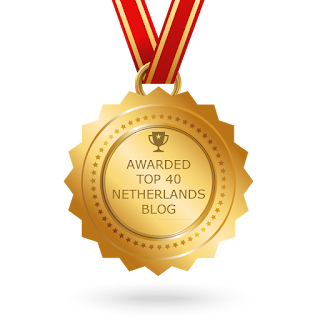The Rumantsch is one of the Rhaeto-Romance varieties, and the Rhaeto-Romance is a sub family of the Romance languages spoken in Switzerland and north and north-eastern Italy. The family of the Raetho-Romance is closely related to French, Franco-Provençal, Occitan, Gallo-Italian (of the Italian regions Piemonte, Liguria, Lombardia and Emilia-Romagna), Venetian and Istriote.
In the scientific debate, called Questione Ladina, started by Graziadio Isaia Ascoli, the model of categorizing Romance languages or dialects in the Alps has been widely discussed. The main question is, if Rumantsch, Ladin and Friulan form a proper language sub-family or if they should rather be considered as part of a much wider northern Italian dialect continuum.
(© wikipedia, Sajoch)
Rumantsch
Nowadays, Rumantsch is spoken in a limited part of the canton of Grisons. Rumantsch is an umbrella term, covering a group of closely related dialects spoken in southern Switzerland and all belonging to the Rhaeto-Romance language family. These dialects include five different varieties:
- Sursilvan (meaning “above the forest”), spoken in the valley Vorderrhein, with Val Lumnezia, Foppa and Cadi.
- Sutsilvan (meaning “below the forest”) spoken in the Hinterrhein valley, with Plaun, Heinzenberg, Domleschg and Schams.
- Surmiran (meaning “above the wall”), spoken in the Julia and Albula valleys, with Surses and Sutses.
- Puter (this name probably comes from a nickname derived from put “porridge”, meaning “porridge-eaters”), spoken in the Upper Engadine (Engiadin Ota) valley, west of Zernez. ´
- Vallader (derives from “valley”), spoken in the Upper Engadine valley (Engiadina Bassa) and the Val Müstair.
In the Val Bregaglia, people speak a variety of Lombard, and speakers use Italian as their written language, even if the dialect is similar to Putèr.
Rumantsch became a national language of Switzerland only in 1938. Even if a distinction between „national languages“ and „official languages“ was introduced, the status of a national language was more symbolic. Only official languages had to be used in official documents, and these languages were German, French and Italian.
After a referendum on March 10, 1996, Rumantsch was recognized as a partial official language of Switzerland (Art. 70 of the Federal Constitution). German, French, Italian and Rhaeto-Rumantsch are national languages of Switzerland.
(© Wikipedia. Tschubby)
- green: Municipalities which have introduced Rumantsch Grischun as the language of instruction
- light red: Municipalities which use a regional variety as the language of instruction
- red: Municipalities which had introduced Rumantsch Grischun, but have since decided to revert to a regional variety
All Rumantsch speakers are bilingual in Rumantsch and Germand today. Monolongual Rumantsch speakers can only be found among pre-school children. As Rumantsch linguist Ricarda Liver writes: “Whereas the cliché of the bearded, sock-knitting Alpine shepherd who speaks and understands only Romansh, may still have been a reality here and there fifty years ago, there are nowadays no adult Romansh who do not possess a bilingual competence.” [cfr. Ricarda Liver, Rätoromanisch – Eine Einführung in das Bündnerromanische, 1999, Tübingen: Gunter Narr, p.67; the original quote is in German: “Während vor fünfzig Jahren das Cliché des bärtigen, strümpfestrickenden Alphirten, der nur rätoromanisch spricht und versteht, noch da und dort Realität sein mochte, gibt es heute keine erwachsenen Rätoromanen mehr, die nicht über eine bilinguale Sprachkompetenz verfügten.”]
Gudench Barblan (1860-1916) A la lingua materna
Chara lingua da la mamma,
tü sonor rumantsch ladin,
tü favella dutscha, lamma,
oh, co t’am eu sainza fin!
In teis suns, cur eir’in chüna
M’ha la mamma charezzà,
E chanzuns da l’Engiadina
In l’uraglia m’ha chantà.
Dear language of the mother,
You Romansh sound of the Engadine,
you sweet, soft speech,
oh, how I love you endlessly!
In your sounds, when I was in the cradle
Did my mother love me,
and songs of the Engadine
sang into the ear.
You can find the audio sample of this poem and those of the fable The Fox and the Crow in the six dialects of Rumantsch on this site, where you have also a much more detailed explanation of the linguistic situation of Rumantsch in the canton of Grison.
Rumantsch Grischun
Rumantsch Grischun is an artificial written language introduced in 1982 by the linguist Heinrich Schmid and Bernard Carthomas (from the Lia Rumantscha). They combined the idioms of the Vallader, the Surmiran and the Sursilvan varieties, trying to find the major similarities among these three dialects. – Before the introduction of the official written form of Rumantsch Grischun in 2003, books for pupils in public schools were printed in the five different idioms.
Related articles
- Multilingual Switzerland (expatsincebirth.com)
- The Swiss Italian (expatsincebirth.com)
- Why “Switzerland”? (expatsincebirth.com)
- The “Suisse romand” (expatsincebirth.com)
- Romansh Grischun (virtuallinguist.typepad.com)
- The Swiss German (expatsincebirth.com)
Categories: Switzerland








This made me think of my fellow rural Bavarians, who sometimes pretend not to speak or understand Hochdeutsch, because they just can’t be bothered with tourists or ‘Zuagroaste(n)’, lol.
LikeLike
Well, but in the Rumantsch-speaking parts of Switzerland, people are bi- or trilingual and very friendly 😉 – I know the sort of people you’re talking about, but talking about my experiences with them would be another story…
LikeLike